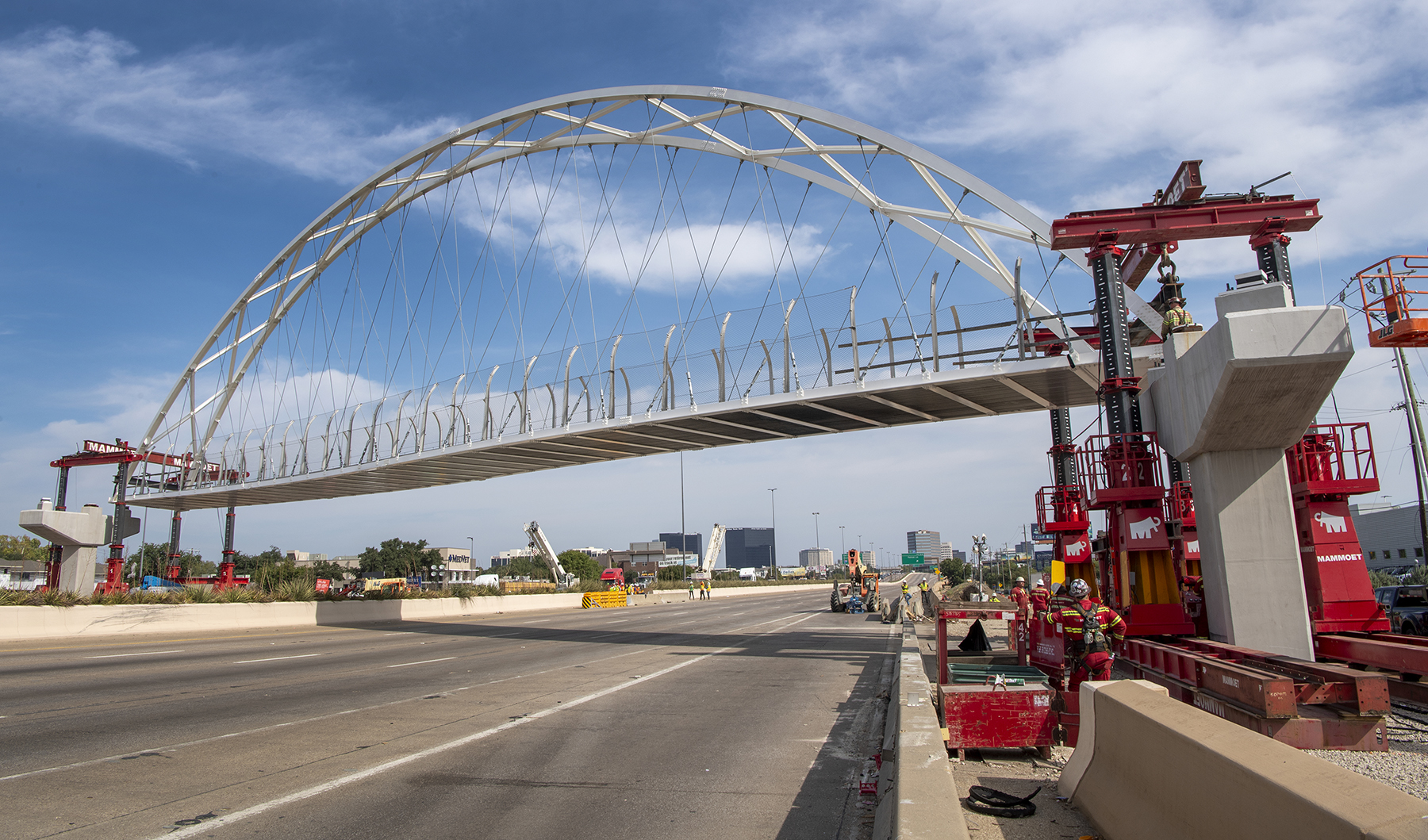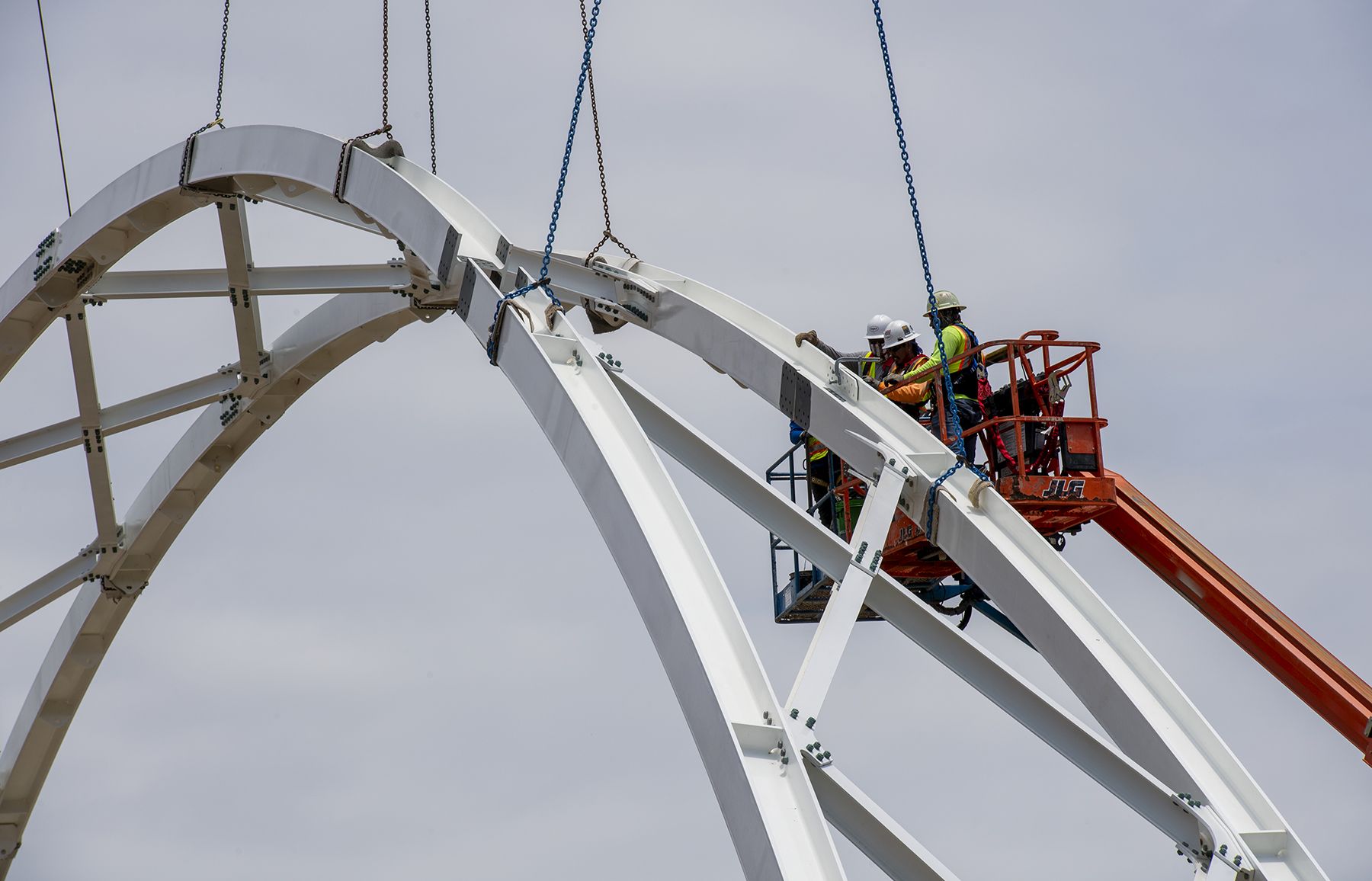 Texas Department of Transportation
Texas Department of Transportation Most of the Texas Department of Transportation work the public sees is in construction, but using artificial intelligence, the department has reduced response times to incidents by an average of 8 minutes, helping clear roadways quicker and making them safer.
The Texas Department of Transportation is in the midst of a three-year strategic plan aimed at “leveraging the power of artificial intelligence … to help make Texas roads safer and enhance mobility across the state,” according to a TxDOT press release.
Further reading:
- What is AI’s place in civil engineering?
- What do civil engineers need to know about artificial intelligence?
- Using AI to conquer complex, costly infrastructure problems
TxDOT’s 2025-2027 Artificial Intelligence Strategic Plan, announced in December 2024, is a 70-page document that focuses on several key areas, including:
- Optimizing infrastructure by using AI to help improve the efficiency and resiliency of the state’s transportation network
- Using AI-enabled analytics to enhance how staff can make decisions regarding roadway operations and maintenance
- Leveraging AI to help TxDOT employees and partners deliver better services to the traveling public
- Unlocking workforce potential by reducing demands on employees from routine and manual tasks, “enabling them to focus on higher-value work and innovation,” according to the strategic plan
“TxDOT is committed to staying at the forefront of technological advancements, and AI offers tremendous potential to improve safety and streamline operations,” explained Marc Williams, P.E., TxDOT executive director, in the press release. “By utilizing AI in a secure and responsible manner, we are revolutionizing the way we monitor and manage traffic, detect incidents in real time, and streamline how we work to help get projects delivered more efficiently.”
AI action
The strategic plan features current AI projects that TxDOT has already undertaken along with use cases that highlight AI tools and capabilities that the agency’s employees would like to have.
The list of AI projects already completed or currently being implemented includes:
- An invoice verification process for TxDOT’s engineering-related services. The original system consisted of “a manual, labor-intensive, and time-consuming process involving the review of more than 100 pages per invoice and complicated approval routing,” according to the strategic plan. But the agency’s Transportation Programs Division used AI to streamline line-item verification. In some situations, the AI process reduced the time required to enter invoice information from seven days to 30 minutes.
- The automatic detection of roadway incidents. In a pilot project, TxDOT’s Austin District is using an AI-based traffic management platform to leverage data from Intelligent Transportation System cameras and sensors and “external data sources from navigation solutions and telematics to create a rapid and holistic view of traffic patterns on the roadway,” according to the strategic plan. The machine learning technology “normalizes disparate data sets to enhance incident detention to enable rapid response and resolution, amplifying transportation operations and situational awareness … to enhance safety, transparency, reduced congestion, and travel time reliability.”
- Robotic process automation for onboarding and offboarding employees. The project has “significantly improved the efficiency of TxDOT’s user access management process,” according to the strategic plan, leveraging AI and machine learning algorithms in a robotic system to enable “the automatic performance of onboarding and offboarding tasks with a high degree of decision-supporting outputs.” By automating tasks such as user account provisioning, security group management, drive mapping, and account removal, the robotic process “reduced previously labor-intensive and time-consuming operations to mere seconds.”
AI ideas
 Texas Department of Transportation
Texas Department of TransportationSome 230 potential AI use cases are also outlined in the strategic plan, aimed at preparing TxDOT “for the technological innovations that will reshape its operations.” The use cases were developed from a series of 14 focus groups with 91 participants, based on more than 500 suggestions collected from TxDOT staff in every district and division within the agency.
The use cases feature numerous requests for specific AI capabilities from TxDOT engineers working on traffic, safety, pavement, and other infrastructure issues. These requests include AI tools and systems that:
- Integrate utility mapping data from various sources to create a comprehensive, project-specific utility map, identifying potential conflicts and reducing the risk of utility-related delays and safety hazards during construction
- Leverage drones, computer vision, and machine learning to automate bridge inspections, identifying structural issues, corrosion, and deterioration patterns, and predicting future bridge conditions, so that TxDOT can prioritize bridge maintenance and repair activities, ensuring the safety and longevity of its bridge inventory
- Analyze historical material testing data, along with environmental and project-specific factors, to predict the likelihood of material failures and optimize testing frequencies, enabling TxDOT to proactively identify and address potential quality issues, reduce testing costs, and ensure the durability and performance of its infrastructure materials
- Leverage computer vision and sensor data to automatically detect, count, and analyze pedestrian and bicycle traffic, providing valuable insights into usage patterns, safety concerns, and infrastructure needs, enabling TxDOT to make data-driven decisions and prioritize investments in pedestrian and bicycle facilities
- Automate repetitive tasks, generate required documentation, and reduce the manual effort involved in submitting project forms and reports at various stages to streamline processes and focus on high-value activities
- Evaluate the long-term viability of designs, considering factors such as traffic projections and maintenance needs, minimizing the risk of costly future redesigns
- Analyze pavement condition data, traffic patterns, and life-cycle cost models to recommend the most suitable pavement treatments and designs for specific projects to optimize performance and longevity
- Integrate survey data, terrain information, and design standards to generate initial road designs via 3D modeling
- Optimize signal timing across various corridors, dynamically adjusting to real-time traffic conditions to enhance traffic flow, minimize delays, and improve safety
- Change signal timing and phasing dynamically at high-volume intersections, tailored to daily peaks, unexpected reroutes, and special events, to optimize flow and decrease bottlenecks, using historical traffic data for seamless coordination with adjacent jurisdictions
Additional use case examples can be found in the strategic plan’s lengthy appendix, which fills more than two-thirds of the report.
TxDOT plans to use AI over the next three years to “enhance its processes, policies, and responsible management of Texas’ transportation investments,” the strategic plan concludes. The recommendations within that plan will help prepare TxDOT “for upcoming innovations in technology that will change how the agency works. The plan emphasizes optimizing infrastructure, improving data-driven decision-making, enhancing the stakeholder experience, and unlocking workforce potential.”



